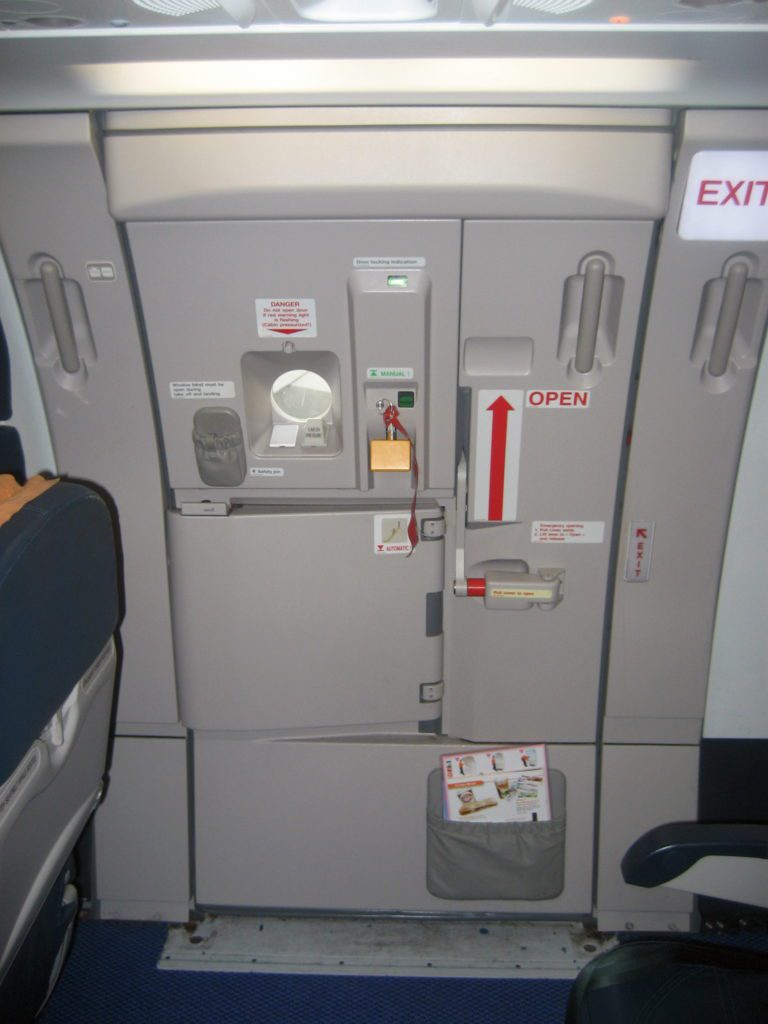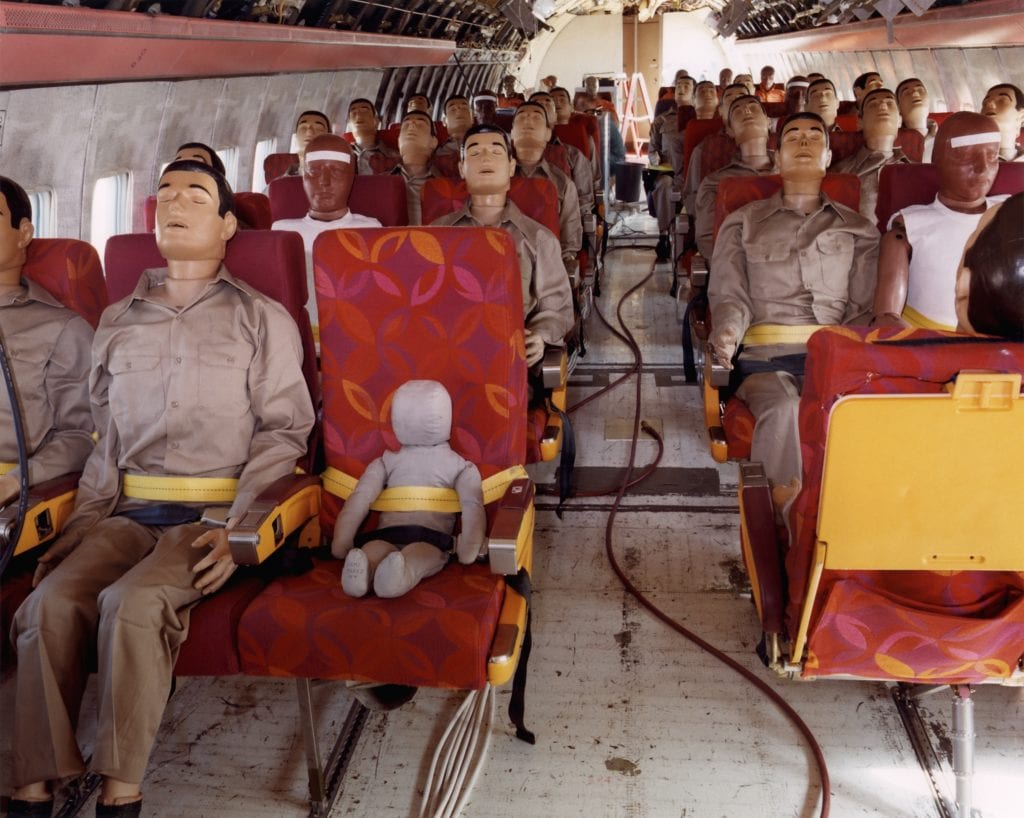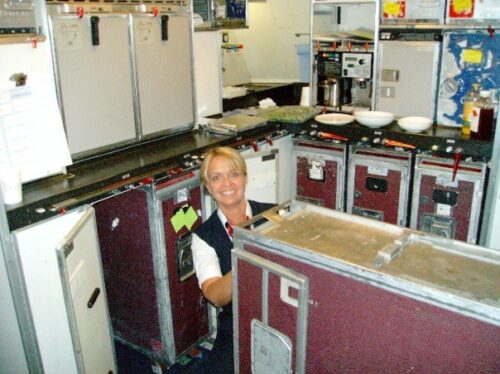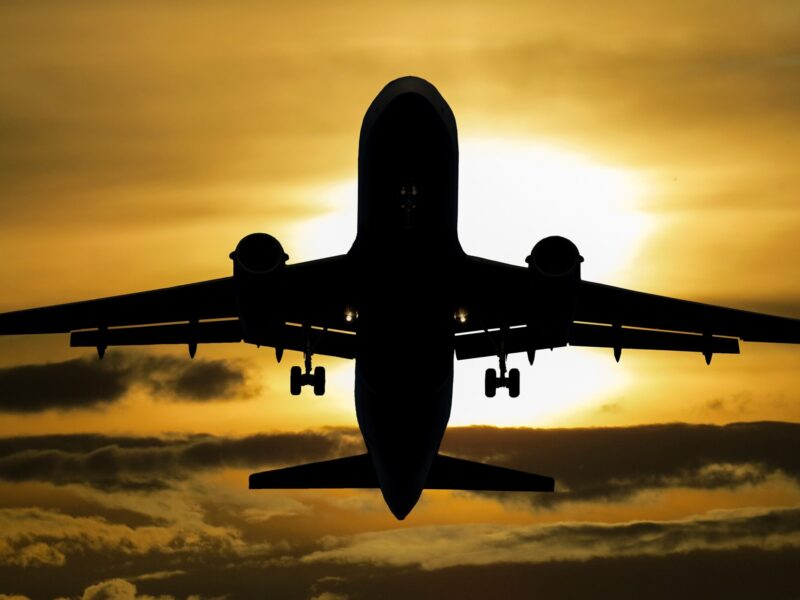Flying remains one of the safest way to travel. According to the NTSB (The National Transportation Safety Board) the odds of being in an airplane crash is one in 29.4 million. The survival rate of surviving a serious plane crash is 77 per cent, this from the same source.
This being said, it costs nothing but a few minutes of your time, some clear thinking and a little forward planning to help improve your chances of surviving should something go wrong, on the ground or in mid-air.
Trouble in the air is very rare. It is hitting the ground that causes it.
— Amelia Earhart 1928
Air travel can be stressful, the hustle and bustle of the terminal, flight delays and the pushing and shoving at the boarding gate. By the time you have found somewhere to stow your carry-on baggage you want to slump in your seat and wait for the drinks cart to come by.
Before you settle in for the duration of the journey, take a few moments to familiarise yourself with your surroundings. These few moments could be a lifesaver.
As former cabin crew for a major airline, I personally follow these top 16 flying safety tips on every flight I take.
Flying safety tip #1 – Know your escape route
Find your nearest exit. It could be a main door or a smaller over-wing exit which you or a fellow passenger may have to open in case of an evacuation. Count the rows to your nearest exit. Remember your nearest exit could be blocked so check out where the next closest is, including any behind you.
Note – If you are sat in an over-wing exit row, prior to take-off the crew will brief you on how to open the door. They will also ask you if you are comfortable in performing this task, if you do not feel comfortable now is the time to speak up.

Flying safety tip #2 – Watch the safety briefing
No matter how regularly you fly, you should always watch the safety briefing. In some cases the crew will perform a manual briefing, in other cases it will be shown on a video. In an attempt to get jaded passengers to actually watch the briefing, more and more airlines are producing modern, cartoon style videos to grab people’s attention.
A few minutes of your time which could save your life, so quit the chit chat, ditch the headphones, drop the newspaper and watch!
Flying safety tip #3 – Read the safety card
Aviation accidents aren’t one size fits all and nor are aircraft. These double-sided laminated bits of card are there for a purpose. Better to spend a few minutes reading it, rather than your family and friends reading your eulogy.
The only characteristic all airliners share is that upon proper urging they are normally capable of leaving the earth’s surface.
– Ernest K. Gann
Flying safety tip #4 – Footwear fit for flying
Before you slip off your shoes and settle down for the long flight at least wait until the landing gear goes up. If something were to go wrong, the flight crew will likely abort the landing and you could well be evacuated rapidly. You really don’t want to be running away from the aircraft on stony tarmac, in just your socks.
On the same subject, when choosing your footwear, soft, sports shoes are always a better choice than heels which could rip the slide and impede your exit or that of your fellow passengers.
Flying safety tip #5 – Keep your phone close
Of course you’ll be told to turn off your phone or put it into flight mode but personally, once I have done that, I always keep my phone handy in a pocket on my person. If you do have an emergency evacuation at least you can make contact with anyone, be it emergency services or family, you could well be one of the only people with a working phone and that could be a real bonus.
Flying safety tip #6 – Life vests, when to inflate
Ever wondered why, in the safety briefing, (were you listening?) the crew tells you not inflate your life vest until outside the aircraft in case of a landing on water?
If you inflate your life vest immediately on impact and the aircraft fills with water, you will float to the top and not be able to get out. Simple as that! Again, listen to the briefing.
Note – In case of a planned emergency, as it’s known in the trade. The crew will most likely perform another briefing specific to the emergency. Need I tell you how important it is to listen to this briefing?
Flying safety tip #7 – No smoke without fire
One of the most dangerous emergency scenarios onboard an aircraft is fire. Fire can spread incredibly quickly and the main aim of the flight crew will be to get the aircraft on the ground as quickly as possible. Cabin crew are trained thoroughly in dealing with onboard fires, so stay out of their way, remain calm and follow their instructions.
Despite smoking on flights being banned by almost all major airlines, some selfish idiots think they can get away with having a sneaky smoke in the bathroom. Some even going as far as to block the smoke detecter with a cup. If you detect that someone using the bathroom before you has been smoking, or if you smell smoke at any time, tell the crew immediately. Time is of the essence.
In an emergency evacuation with fire, smoke can be the biggest killer. Keep low to the ground and if possible cover your mouth and nose with an item of clothing as you evacuate. Remember when I said about counting the rows to the nearest exit? This is when that knowledge could save your life, as vision will be limited.
Flying safety tip #8 – Sit down and strap in
Apart from the fact that you’re probably getting in their way. There’s another reason why the cabin crew want you to sit down and strap in.
If you’ve ever experienced an aircraft in severe turbulence you will know it feels like the aircraft is about to drop from the sky.
This sudden drop can cause drinks carts to fly in the air and if you are standing in the aisle it could be your head that hits the ceiling, injuring you and your fellow passengers,
The flight crew will usually know of any turbulence ahead and switch on the fasten seat belt signs in anticipation. But often clear-air turbulence can hit without warning and this can be the most severe. So sit down, strap in and be safe.
It may seem silly or strange that during the safety demo, the crew tell you how to open and release your seat belt. The reason is because aircraft seat belts are completely different from those in a car. Statistics have shown that many people who did not manage to evacuate an aircraft following an emergency, perished because in their state of panic they couldn’t open their seatbelt.
Flying safety tip #9 – Grab a mask and breathe
In case of the aircraft losing pressure. You will have seen in the safety demo (if you were watching) that oxygen masks will drop down above your head. If this happens you should immediately grab and pull the mask and breathe as normal.
The most important thing you can do for you and those around you is to grab that mask as soon as it drops. Whether you are travelling with a child, older person or you are just a helpful, caring kind of person, just grab and don that mask before you help anyone else.
It can take as little as five minutes in a depressurised aircraft for you to lose consciousness, then you are no use to anyone.
Remember the crew also has to get hold of oxygen. Superheroes they may be but they still need O2 to survive. You may see them, what is known as ‘monkeying’ through the cabin, grabbing a breath of oxygen from spare masks as they make their way to their crew station to don their portable oxygen.
Flying safety tip #10 – Exit etiquette
I addressed earlier, the passenger responsibilities when sat in an exit row. Remember to follow the crew’s instructions and you and your fellow passengers should be able to exit safely over the wing thanks to your quick thinking and prior listening skills!
There may be a situation where a cabin crew member is incapacitated and unable to open a main door. Remember, in an evacuation situation the utmost priority is to get off that aircraft.
If there is no crew member there able to open the door, someone has to do it. Most aircraft doors have basic instructions on how to open them in an emergency, so it could be down to you.
I must stress I am not telling you to come over all ‘incredible hulk’ and push past a perfectly capable crew member to open the door – remember they are in charge!
Another point – when I was working as cabin crew, I always hoped that in case of an emergency evacuation and if I was incapacitated, that some kind passenger would shove me down the slide. Better a broken ankle than perishing after everyone else had left.
As crew we were also told, if a passenger was panicking and dilly dallying at the exit, a firm shove in the back would prevent them from blocking the escape route of all the passengers behind them. (Sorry sir/madam)
Flying safety tip #11 – Lay off the booze
I admit, as a passenger, I enjoy a couple of drinks in the lounge before boarding and one with my in-flight meal. But, I know my limit and am aware of the need to be coherent and alert, just in case the worst were to happen.
A drunk passenger is a danger to him or herself and to the other passengers and crew. Just don’t do it, save the cocktails for your destination and be a responsible flyer.
Note – Most airlines carry restraint kits and crew are trained how to safely use them. Remember, the flight crew can make a decision to divert the flight to offload a disruptive passenger. You don’t want to be that idiot.
Flying safety tip #12 – Speak up don’t be shy
One design flaw in commercial aviation is that the flight crew can’t accurately physically see what is going on down the back of the aircraft, inside or out. Yes, modern airliners have endless safety instruments and one of the main functions of the cabin crew is to be the eyes and ears of the flight crew, in the cabin.
As passengers you have all the time in the world to observe what is happening throughout the flight. Be aware of all your senses, listen for anything unusual, keep your eyes peeled for anomalies and as mentioned before, if you smell burning, let the crew know.
Passengers, and sometimes crew can be in awe of the pilots, their crisp uniforms, jaunty caps and air of authority. At the end of the day they are only human. Speaking up could save lives.
In 1991, a British Midland aircraft, crashed on England’s M1 motorway, killing 47 people and injuring 74. In a tragic error, the flight crew switched off a working engine, not realising the problem lay with the other one. This rendered the aircraft unflyable and the 737-400 crashed into the motorway embankment in Kegworth in the West Midlands.
Surviving passengers and crew later commented that they were confused when the captain told them via the PA system that he was shutting down the right hand engine, when they could clearly see the problem lay with the left.
They all commented that they assumed the captain must be right so they did not say anything. A situation where speaking up could have saved dozens of lives.
Note – Since the Kegworth (UK) accident, new training procedures were brought into effect. The training, known as CRM (crew resource management) teaches all crew members the importance of situational awareness and the importance of challenging their superiors if they think something doesn’t seem right.
Flying safety tip #13 – Brace yourself
Another important part of the pre-flight safety briefing is the brace position to use in case of an emergency landing. The recommended brace position varies between European carriers and those in the US but the main message is to keep your head down with your feet flat to the floor.
U.S. Airways Flight 1549, which landed on the Hudson river in New York City in 2009 had no fatalities. This has been attributed to passengers adopting the correct brace position.

Flying safety tip #14 – Keeping calm
Easy to say when you’re involved in an inflight emergency right? Take a deep breath and clear your head. Listen carefully to the instructions given by the crew and try to remain calm. Listen for any further instructions as an emergency can be a very changeable situation.
Seconds may seem like hours, maybe take a minute to re-read the safety card and check again for your nearest useable exit. Having something to do will help keep you calm.
Flying safety tip #15 – Listen to the crew
The cabin crew are not just onboard to serve you snacks and mix your drinks. Apart from their customer service skills, the crew are chosen for their calm and professional personality.
Cabin crew go through weeks of rigorous training when they join an airline and this training is refreshed on an annual basis.
You may not know this but cabin crew are taught in-depth medical procedures including CPR, use of defibrillator and even childbirth.
The safety training is strict and thorough and on a pass or fail basis. Crew members are taught how to fight on-board fires, deal with unruly passengers, cope in the event of a hijacking and evacuate an aircraft in the minimum time possible.
Give them the respect they deserve, observe the safety briefing, listen to instructions and remember they are there for your safety.

Flying safety tip #16 – Sit back and relax
Flying remains the safest form of transport there is. Aviation accidents grab the world’s attention because of the number of people usually involved. Road accidents happen every second of every day and few make the headlines.
If you are flying, chances are you are off on vacation or visiting friends and family, enjoy the journey, even if it is just a business trip.
The above flying safety tips are just there to plant in the back of your mind and pretty much everyone who reads this blog piece will never need to use most of them.
Despite having logged many thousands of air miles, I still get a thrill from flying and even enjoy a bit of turbulence to spice up a long flight.
The rush from hurtling down the runway on take-off is one of my favourite parts of any trip and the feeling has never worn off.
To most people, the sky is the limit. To those who love aviation, the sky is home.
– Jerry Crawford
Love it? Pin it






This was such a fascinating post! First, I didn’t realize the odds of being in an aviation crash were so slim.
All of these tips were incredible helpful for anyone who flies and definitely not stuff we all know/think about. I truly think you are helping people to be safer while flying, and that’s awesome.
Thanks Danielle!
Most of these seem so basic and almost like common sense but so important to be reminded of. When you’re in the situation, it’s easy to forget everything you think you know. Always great to go over before every flight. You never know!
Definitely even if you are a frequent flyer!
Oh yes! Speaking up if you have any doubts is so so important. The passengers might get panicky in emergency situations, but being alert on the flight is extremely important.
Good reminders! I work for a safety conscious company, and get reminded of these a lot. But, I never did find out the why about not inflating the life vest yet, until this article! I always assumed it was because inflated vests take up more space and gets in the way of everyone evacuating rapidly.
I’ve flown hundreds of times, but I still read this article carefully. It’s so important to constantly remind ourselves of flight safety so we can be helpful and attentive in the event of a problem.
Done really awesome flying safety tips here, love the quote! 😆
It is a good reminder to talk about flying safety. When you fly a lot, you tend to take it for granted. But being reminded of basic safety tips helps ensure a fast response to an emergency. I do love to slip off my shoes and put on slippers on a long flight. But do hold off until the plane is fully in the air. Hubby chided me once and I have not forget this tip. The other thing is remembering to have your phone fully charged. I am always surprised at people who get up when the plane is landed but not at the gate. Sudden movements always happen! Great reminders all!
I’ve been on four aircraft in the past two weeks, and was appalled at the lack of attention to the safety briefing. Yes, I’ve heard it before too, but it doesn’t hurt to listen again. I’ve sometimes felt, from the crew member’s expression, that I was the only one listening.
This time I was surprised about the life vests – they were mentioned on flights that were overland, but not on those that crossed the English Channel. I was relieved to note the sign that said I would find one under my seat.
Great tips and such common sense. It also helps when you’re watching the safety person/video that they put a bit of fun into, so you pay more attention, especially for the nervous flyers, but I don’t suppose we can expect everything.
This was detailed and informative! As someone who flys a good bit, this was much needed!
I believe listening to crews is an important matter to remember because they were trained to take good care of the passengers. Thank you for sharing this relevant article!
This is such an amazing and informative post! Even the things that seem more like common sense are still things everyone should think carefully about. The odds may not be likely but it’s important to have the best chance possible should the worst happen!
Great article! Really interesting to read!
Very helpful article. Thank you for your effort and for sharing such great information
Safety is so easy to overlook until you need it! Thanks for sharing 🙂
Wow! These tips are incredibly helpful. I’ve never encountered flying advice presented in such a comprehensive manner. It’s truly impressive. Keeping the phone in your pocket is indeed the best tip—it can actually be a bonus.
Thank you so much! 🙂
Finally, a straight answer to the ‘inflate life vest later’ question!
Hahaha! Yes! Glad I could help! 🙂
Great post! As someone with a moderate (but manageable) fear of flying, I always stay nicely buckled in my seat, and try to mediate (not the entire flight, but it helps when it gets a bit bumpy).
It’s very strange that a good distraction will help with fear of flying too – often has to be stronger than the inflight entertainment or a book. If I can arrange it, I like to sit close to flight attendants/galley sometimes. May not help in a real emergency but certainly when it gets bumpy.
Thanks Anja. Yes sitting near the galley is a good idea! Close to the doors and you’ll get a good feel of what’s going on!
I think we are all afraid to imagine the plane crashing but you are right that we should always be prepared. Good advice.